
January 11, 2010
 CR Holiday Interview Series Wrap-Up
CR Holiday Interview Series Wrap-Up

It was my great pleasure the last three weeks to interview some but certainly not all of my most valued writing-about-comics colleagues about some but certainly not all of the great books, series and single issues of the last 10 years. After a decade-long period where it seemed like discussing comics meant talking about everything but the work, I wanted to spend a few weeks of calendar changeover time focused in on the books themselves. I know I enjoyed myself, and I hope you did, too. I am grateful to all that drove traffic to this site during the series, and want to wish a special thank you to the interview participants. I hope that some of you out there found new writers to follow along with some comics to think about buying, or at least discovered a different way to look at some comics you own and some writers you thought you knew. -- Tom Spurgeon
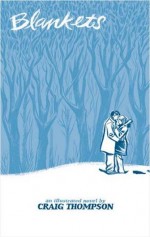
*
CR Holiday Interview One: Blankets
"It'd been years since I'd last read the book before I re-read it to prep for this conversation, and the thing that struck me
immediately was just how openly, nakedly, ecstatically
emotional it is! Right from the get-go, from the first scene with Craig and his little brother in bed, they horse around like cartoon animals, then their Dad shows up all angry and he's drawn as a hulking shadowed ogre, then little Phil gets locked in the cubbyhole and it's full of
monsters and
demons and
spiders, it's like
Hell, and he screams and cries and pleads and panics and ultimately despairs, and Craig is just
devastated. That's the first scene! It's all peaks and valleys. Then it happens again, right away, with Craig getting bullied at school. And so on for 600 pages. In this re-read, it became obvious to me that what many people write off as cloying or melodramatic or emo was a conscious and utterly in-control choice on Thompson's part to pitch everything to the balcony, because that's reflective of how it felt in the moment." --
Sean T. Collins
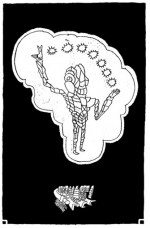
*
CR Holiday Interview Two: Multiforce
"Brinkman's skill lies in his phrasing style. He constructs pages out of connecting routines. So the narrative itself is built into the segments. The routines, like a giant head rolling down a hill, aren't front and center like in most comics. They're like backdrops for the gag cartoons that float around. There's a tension between the elements. It's an expansion on his earlier style which was much more about following a main character through a landscape. In contrast, the phrasing style of
Multiforce is more like a diagram. It grows and grows and builds upon itself like a city; like a shattered mirror. That's the architecture as I see it. It 's the drawing. It's the scaling of panels in an organic manner that is pleasing to look at. There's evident vibrancy in the lines and forms. Those all build together in ways that I rarely see. Figures, landscapes, psychic space. Brinkman's offering a glimpse into a real world. A wide world." --
Frank Santoro
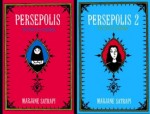
*
CR Holiday Interview Three: Persepolis
"I also think that Satrapi's decision to stay with L'Asso is enormous. After
Persepolis she could have published anywhere, and probably for a huge advance. I know what the advances are for some artists who have sold 1/20th what she sells, so I can imagine some people offered her dumptrucks filled with Euros. And she turned them down. She said, essentially, 'L'Asso believed in me when none of the rest of you would give me a look; that's why I believe in L'Asso.' That's really amazing when you think of it, that kind of loyalty. There are a lot of American cartoonists who have abandoned the publishers that gave them a break for a lot less." --
Bart Beaty
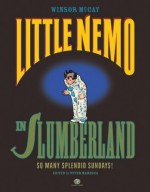
*
CR Holiday Interview Four: So Many Splendid Sundays
"When I saw
Little Nemo at this size, with such rich color work, it simply blew my mind. I got it: it was a revelation, a perfect marriage. I'd read that McCay was a magnificent artist, but Maresca's project was the first time I was able to actually see it. I could read the words: I could get lost in the drawings. I'm no art expert, but I think So
Many Splendid Sundays does what art does. It doesn't just please the eye: it makes you look at it again and again, think about it, study it from other angles and approach it from different critical perspectives." --
Kristy Valenti
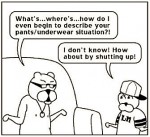
*
CR Holiday Interview Five: Achewood
"It's elusive, isn't it? A lot of it is in the dialogue, in the characters having funny and distinctive voices, but it's more than that. I can't pin it down. The Wikipedia entry cracks me up with its efforts to explain the strips: 'Mr. Bear and Téodor are discussing Téodor's confusion over a drum machine. Mr. Bear informs Téodor that there is an instruction manual. However, Philippe is standing on it.' Oh, yeah, I see how that's funny. Thanks, Wikipedia! But why is it so funny? I don't really know. All I can offer is that it's funnier when characters talk without punctuation, and Onstad gets a lot of mileage out of that." --
Shaenon Garrity
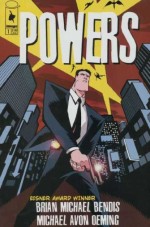
*
CR Holiday Interview Six: Powers
"I don't know that Bendis' strengths are best utilized in superhero team books, or orchestrating events, but I guess I'd prefer he do them than lots of other superhero comics writers. It's important that he keep doing
Powers, or another creator-owned book where he can explore whatever he wants, pretty much unfiltered. If all he did was write Marvel Universe stuff, it's not that his impact isn't felt, but it's easier for those impacts to be minimized, certainly from the standpoint of new creators wiping away what you did, but also because I think you have readers of those books more interested in the characters than the creators or their styles. You know, those people who think it's important that at some point, Iron Man and Captain America have to be buddies again, on the same team of Avengers." --
Chris Allen

*
CR Holiday Interview Seven: MW
"While
MW has the same structure -- greedy men leave a boy profoundly damaged, and he seeks justice -- there are more layers to the people who created the problem in
MW. They aren't innately horrible people so much as average men who made bad decisions out of self-interest. They deserve punishment for that initial act, but they aren't entirely defined by vice or cruelty. They're more rounded, and I think that's a presentation that adults would embrace. It's a more complex argument that normal people can make terrible choices in a moment of pressure or opportunity and that there can be devastating consequences that they couldn't foresee." --
David P. Welsh
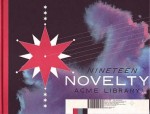
*
CR Holiday Interview Eight: ACME Novelty Library #19
"With Ware, the process always feels organic. The way he draws comics is simply his delivery system for expressing emotion. It really seems to be the only way he knows how to do it at this point, and it seems largely intuitive. It requires a leap from the reader to understand and appreciate his comics language, unlike the way in which Mazzucchelli made it simple for the ideal reader to get what he was doing right away. Ware's ability to express emotion on the page in such a way as to let the event reveal itself to the reader is one of the things that makes him, in my opinion, our greatest living cartoonist." --
Rob Clough
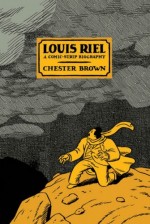
*
CR Holiday Interview Nine: Louis Riel
"Aside from the sparseness I mentioned, I think Brown's great strength is in his character design: his people look like their personalities. John A. Macdonald's slyness and prevarications are embodied in his long Pinocchio nose, Riel's passionate individuality in his wild hair. Brown is also a master of understatement. One of the big problems with comics is that they are too blunt: melodrama is the default mode of comics. Brown consistently avoids the sort of ham-fisted emotionalism that comics are prone to. Brown's staging is also expert: there is a real clarity to how his people are placed, with the background furnishings also serving a narrative purpose." --
Jeet Heer
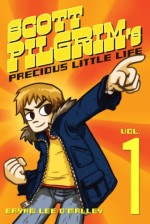
*
CR Holiday Interview Ten: The Scott Pilgrim Series
"In many ways I see
Scott Pilgrim as the dividing line between the new and upcoming generation of cartoonists and the established folks. It's a demarcation point, a push pin in the time line, same as
Zap Comix was in the '60s and
Love and Rockets was in the '80s. I'm not making an aesthetic comparison here, I'm saying in terms of a historical shift,
Scott Pilgrim is something you can point to and say 'Here is when a new generation of cartoonists started drawing on influences outside of the traditional comics sphere of influence (EC, the undergrounds, Marvel/DC) and looking to other works, most notably manga.'" --
Chris Mautner
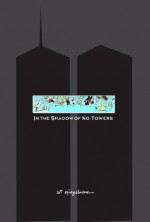
*
CR Holiday Interview Eleven: In The Shadow Of No Towers
"In his introduction, he calls it 'a slow-motion diary of what I experienced while seeking provisional equanimity,' and that strikes me as accurate. More than any of his other comics, with the possible exception of 'Prisoner On The Hell Planet,'
No Towers reads something like art-as-therapy. Much of it appears haphazardly put together, sloppily argued -- often crudely drawn -- and straining for a significance it's unable to articulate for readers. And yet, at least to someone who lived in New York in that era, it definitely evokes the emotional state of those years -- which were often enormously frustrating and confusing and panic-strewn. It doesn't appear to me he was able to shape a lot of the raw emotional subject matter into a cohesive whole, but the parts are there. Or at least some of them are." --
Tim Hodler
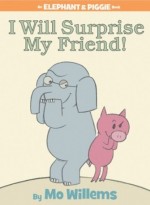
*
CR Holiday Interview Twelve: The Elephant And Piggie Series
"You hardly see that kind of expressive, expansive physical humor in contemporary comic strips, it seems to me, because, among other reasons, there's just not room. Part of the effectiveness of Willems' humor and movement is that it occurs on a full page. Reduce it down to strip size and some of those motion lines would pretty much completely disappear. I could be wrong here I suppose; I don't read a ton of strip comics these days -- I guess the one's I'm most familiar with are
Get Fuzzy and
Dilbert. And I actually think both those strips are funny -- though
Dilbert is remarkably ugly. But I certainly don't see much use of this kind of physical humor in either of them, nor in other strips I've occasionally glanced at. As another example, if Chris Onstad was a third of the cartoonist Mo Willems is, I might actually find
Achewood tolerable." --
Noah Berlatksy
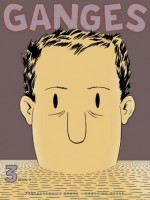
*
CR Holiday Interview Thirteen: Ganges
"That's the thing about
Ganges #3 that makes it a unique comic -- it cannot be told in another medium and work. How are you going to write that down, that aspect of Glenn chasing his own thoughts and memories about completely personal, mundane life aspects, without drawing the character swimming around in his own head? How are you going to find an actor that can deliver the dialog and voice over without layering in a personality that the audience has to come to either negative/positive terms with? That's a big part of why Glenn works so well for me as a protagonist -- he's not someone that I have bad or good feelings for, he's someone I just want to watch, to comprehend." --
Tucker Stone
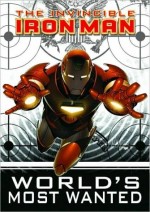
*
CR Holiday Interview Fourteen: The Invincible Iron Man: World's Most Wanted
"One aspect of superhero comics' right-now-ness is that anything that gets in the way of or even defers their readers' enjoyment can be dangerous (missed ship dates, splotchy coloring, difficult storytelling techniques...). If stories for 13-year-old boys don't involve particularly well-realized women characters, those 13-year-old boys may not notice or mind. But I'm not a 13-year-old boy any more -- the superhero comics reader of right now, I feel safe in saying, is generally not 13 any more and/or not a boy -- and if the superhero stories I get don't have greater-than-one-dimensional women in them, that's going to get in the way of my enjoying them, too. I like some dude-centric comics a lot (the buddy-road-trip series
The Incredible Hercules, the father-and-son series
Batman and Robin), but I'd get burned out by a steady diet of nothing else." --
Douglas Wolk
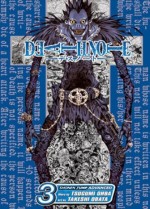
*
CR Holiday Interview Fifteen: Death Note
"
Death Note, you see, is a plot machine. If, as the old saying goes, manga is different from Western pop comics in that it's more about going somewhere than getting there,
Death Note splits the difference by making virtually every chapter a small destination. It's a suspense comic that's just diabolically focused on plot points, dozens and dozens of them, everything swirling around Light the ambitious kid's efforts to evade capture while killing the shit out of criminals so as to reform the world, initially powered by new 'rules' regarding how to use the deadly notebook, every one of them providing fresh fodder for cat 'n mouse contortions, but later just sprawling all of this accumulated background over expanded scenarios. What if Light loses his memory for a while? What if other Shinigami show up with extra Death Notes? What if we fucking kill the series' most popular character right here and replace him with two characters representing (a) emotion and (b) full Vulcan? Oooh, how do we get out of this, dear readers??" --
Jog
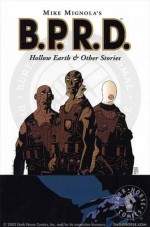
*
CR Holiday Interview Sixteen: BPRD
"There's lots
BPRD does better than most genre comics. Stories are lean, the characters are always present. They build on a continuity that doesn't require you to buy 20 titles. Like the best horror, you're creeped out by atmosphere and the pathetic dehumanizing of life -- then the monster shows up. Davis has a subtle gift for pausing on faces, revealing characters in silent reflection and with perfect mood. Arcudi and Mignola load these characters with plenty of mystery and avenues for self-discovery, like Liz Sherman's future in the
Black Goddess cycle or Hellboy's fragmentary knowledge of his future or Abe's of his past. Johann's existence, and the amoral territory in which his desire to feel again leads him, is funny and sad." --
Ben Schwartz
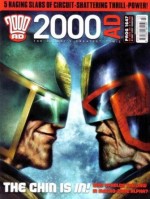
*
CR Holiday Interview Seventeen: 2000 AD
"I think that when you're a teenager, you hit the point, for at least a few years, where you want to put away the superhero fight club comics. You start to see through them at the same time you discover kissing and your own music, not your parents'. I'm not suggesting
2000 AD is all that mature -- it can be shamelessly, stupidly, lovably adolescent -- but, as far as the North American comic experience goes, it doesn't really fit anywhere other than where it did in the '80s, when you could grow up from superhero fights to
Zot! and
Flaming Carrot and maybe
Cerebus or
Love & Rockets or
Neat Stuff. I don't think that 'step-up' exists today. My son loves
Shaman King,
Naruto and all the other
Shonen Jump titles, and when he steps back from comics in a few years, as he invariably will, I wonder whether anything will be around to captivate him as an older teenager." --
Grant Goggans
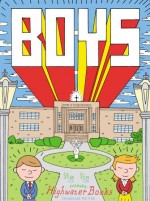
*
CR Holiday Interview Eighteen: Boys
"To my mind,
Boys remains one of the most perfect comic books ever published. It is a single object that encapsulates an entire sensibility in 24 pages. The front cover -- hand drawn but consciously designed; looking less like a comic and more like a zine of my dreams -- opens to a scrappy title page and Regé and Reidy's yearbook photos are printed on the inside covers. Twenty comic strips later and we're done. And then there is the advertisement in the back for other Highwater projects and a slew of Providence-based minis that people are only just catching up to. Circa 2000 was a good time for good times. It functions as a comic book should: an intimate shapshot of a time, place and sensibility." --
Dan Nadel
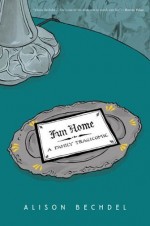
*
CR Holiday Interview Nineteen: Fun Home
"I do think that the formalism of
Fun Home was probably beneficial to the artist in allowing her to separate the life from the work. You have to disconnect from yourself when analyzing, to some degree. (As I'm doing in this interview. Postmodern!) The person that readers think they know is not the same as the actual person -- I can only imagine how an artist deals with literary criticism of an autobiography. It's hard enough seeing people criticize your work when it's not also your life. I should have mentioned above that as another benefit to being long-lived as a critic. You quit caring what people think of you after the second death threat. At least I did." --
Johanna Draper Carlson
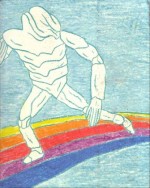
*
CR Holiday Interview Twenty: Kramers Ergot Vol. 4
"I was definitely looking for deeper and more challenging comics experiences at the time, and was perhaps confusing art that was giving me that kind of experience with art that intended to give me that kind of experience, if that makes any sense. I came around pretty quickly, though. Even
Arcade and
RAW included single images and illustrated prose as part of the mix. I can appreciate that approach more now than I did in 2003, and
KE4 probably nudged me along somewhat. I think in the end I just had a positive response to the way the book was sequenced, as we discussed earlier: the way that single images and other 'breaks' made the thing read like a finely crafted mix-tape. I think that's a big reason why this book is built to last as a readable anthology, even if many of the artists have gone on to do other kinds of work." --
Bill Kartalopulous
The next CR Holiday Interview series begins December 12.
posted 6:00 am PST |
Permalink
Daily Blog Archives
November 2019
October 2019
September 2019
August 2019
July 2019
Full Archives


